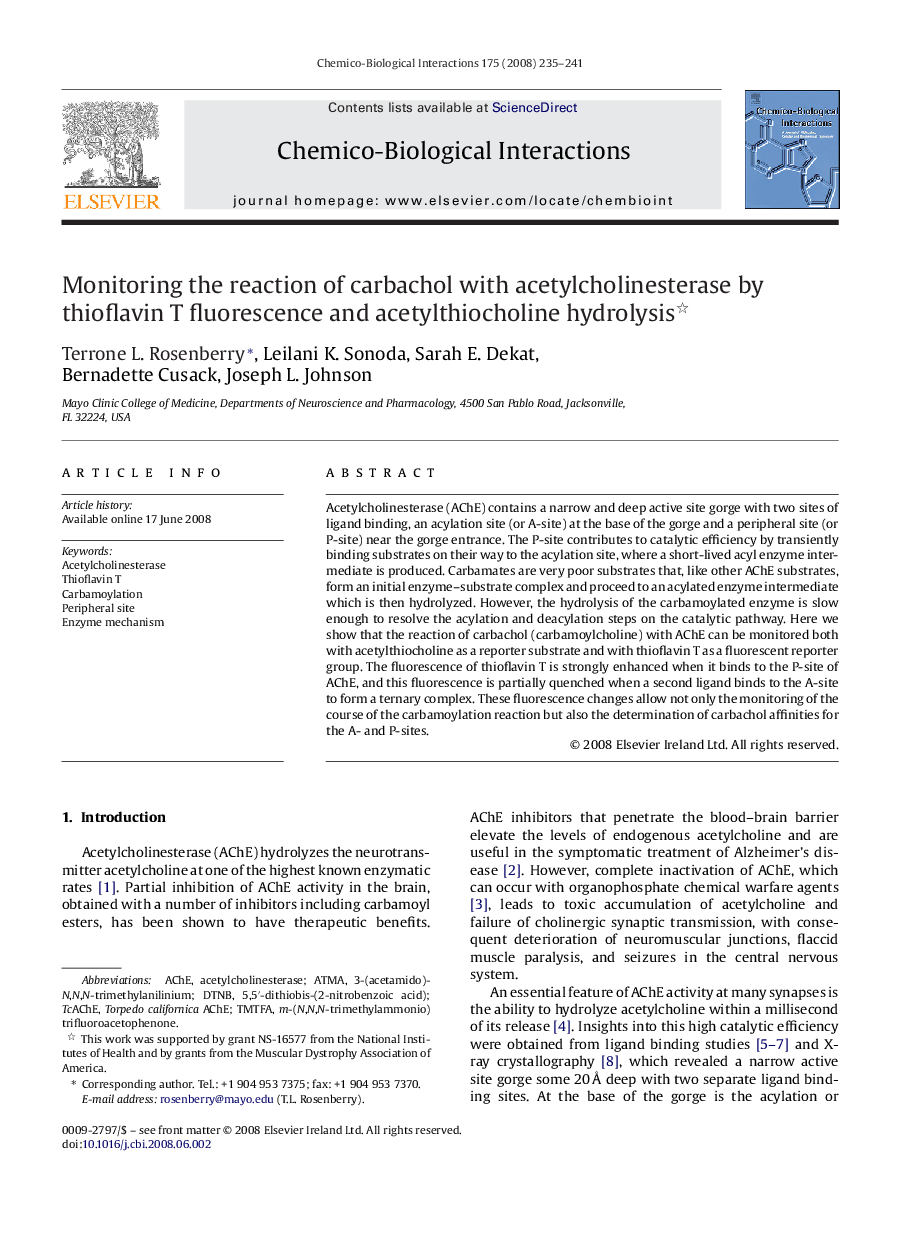| کد مقاله | کد نشریه | سال انتشار | مقاله انگلیسی | نسخه تمام متن |
|---|---|---|---|---|
| 2581592 | 1561653 | 2008 | 7 صفحه PDF | دانلود رایگان |

Acetylcholinesterase (AChE) contains a narrow and deep active site gorge with two sites of ligand binding, an acylation site (or A-site) at the base of the gorge and a peripheral site (or P-site) near the gorge entrance. The P-site contributes to catalytic efficiency by transiently binding substrates on their way to the acylation site, where a short-lived acyl enzyme intermediate is produced. Carbamates are very poor substrates that, like other AChE substrates, form an initial enzyme–substrate complex and proceed to an acylated enzyme intermediate which is then hydrolyzed. However, the hydrolysis of the carbamoylated enzyme is slow enough to resolve the acylation and deacylation steps on the catalytic pathway. Here we show that the reaction of carbachol (carbamoylcholine) with AChE can be monitored both with acetylthiocholine as a reporter substrate and with thioflavin T as a fluorescent reporter group. The fluorescence of thioflavin T is strongly enhanced when it binds to the P-site of AChE, and this fluorescence is partially quenched when a second ligand binds to the A-site to form a ternary complex. These fluorescence changes allow not only the monitoring of the course of the carbamoylation reaction but also the determination of carbachol affinities for the A- and P-sites.
Journal: Chemico-Biological Interactions - Volume 175, Issues 1–3, 25 September 2008, Pages 235–241